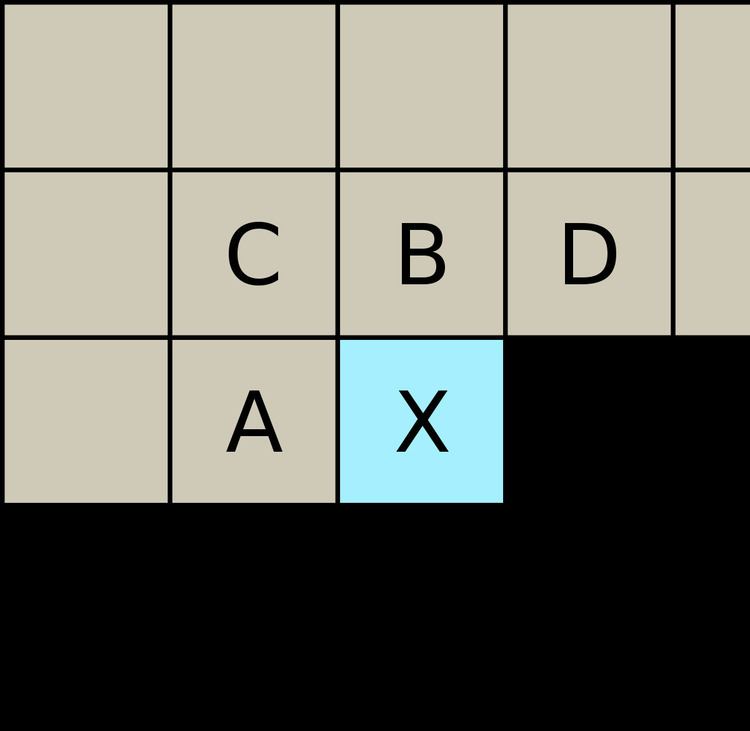 | ||
FELICS, which stands for Fast Efficient & Lossless Image Compression System, is a lossless image compression algorithm that performs 5-times faster than the original lossless JPEG codec and achieves a similar compression ratio.
Contents
History
It was invented by Paul G. Howard and Jeffrey S. Vitter of the Department of Computer Science at Brown University in Providence, Rhode Island, USA, and was first presented at the 1993 IEEE Data Compression Conference in Snowbird, Utah. It was successfully implemented in hardware and deployed as part of HiRISE on the Mars Reconnaissance Orbiter.
Principle
Like other lossless codecs for continuous-tone images, FELICS operates by decorrelating the image and encoding it with an entropy coder. The decorrelation is the context
P lies within the closed interval [L, H] roughly half the time. Otherwise, it is above H or below L. These can be encoded as 1, 01, and 00 respectively (p. 4). The following figure shows the (idealized) histogram of the pixels and their intensity values along the x-axis, and frequency of occurrence along the y-axis.
The distribution of P within the range [L, H] is nearly uniform with a minor peak near the center
Outside the range, P tends to follow a geometric distribution on each side (p. 3). It is encoded using a Rice code with parameters chosen based on previous choices. For each Δ and each possible Rice code parameter k, the algorithm keeps track of the total number of bits that would have been used to encode pixels outside the range. Then for each pixel, it chooses the Rice code with the based on Δ at the pixel.
Improvements
FELICS improvements include methods for estimating Δ and estimating k. For instance, Howard and Vitter's article recognizes that relatively flat areas (with small Δ, especially where L = H) may have some noise, and compression performance in these areas improves by widening the interval, increasing the effective Δ. It is also possible to estimate the optimal k for a given Δ based on the mean of all prediction residues seen so far, which is faster and uses less memory than computing the number of bits used for each k.
